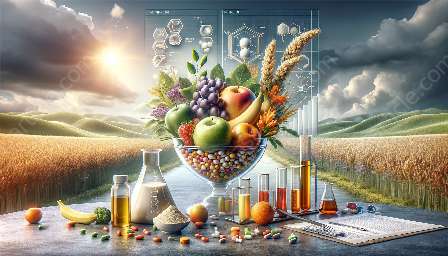When it comes to making healthy food choices, understanding the concept of nutrient-rich and nutrient-poor foods is essential. Nutrient-rich foods provide high levels of essential nutrients, while nutrient-poor foods are lacking in these vital components. This topic cluster aims to provide comprehensive insights into the differences between these two categories and delve into the intricate relationship between nutrients, non-nutrients, and nutrition science.
The Importance of Nutrients in Food
Nutrients are substances in food that are essential for growth, maintenance, and repair of the body. They include carbohydrates, proteins, fats, vitamins, and minerals, all of which play crucial roles in supporting bodily functions and overall health. Nutrient-rich foods are abundant in these essential components, making them valuable for maintaining a well-balanced diet.
Examples of Nutrient-Rich Foods
Examples of nutrient-rich foods include:
- Fruits and Vegetables: These contain an array of vitamins, minerals, and fiber that support various bodily functions and contribute to overall health.
- Lean Proteins: Sources of lean protein, such as poultry, fish, and legumes, provide essential amino acids necessary for building and repairing tissues.
- Whole Grains: Whole grains offer essential nutrients like fiber, B vitamins, and minerals, promoting digestive health and providing sustained energy.
Understanding Nutrient-Poor Foods
On the other hand, nutrient-poor foods lack significant amounts of essential nutrients. These foods are often high in calories, sugar, unhealthy fats, and sodium, while offering minimal nutritional value. Consuming them in excess can lead to deficiencies and various health issues.
Examples of Nutrient-Poor Foods
Examples of nutrient-poor foods include:
- Processed Foods: Many processed foods, such as sugary snacks and fast food, are devoid of essential nutrients and loaded with unhealthy additives and preservatives.
- Sugary Beverages: Sodas and other sugary drinks are high in empty calories and lack essential nutrients, contributing to weight gain and increased risk of chronic diseases.
- Highly Processed Grains: Refined grains, like white bread and sugary cereals, are stripped of their nutrient-dense components during processing, leaving behind empty calories.
The Role of Non-Nutrients in Food
Non-nutrients are biologically active compounds present in foods that do not fall into the classic categories of carbohydrates, proteins, fats, vitamins, or minerals. Though they are not considered essential for life, many non-nutrients have beneficial effects on health, such as antioxidant and anti-inflammatory properties.
Examples of Non-Nutrients
Examples of non-nutrients include:
- Phytochemicals: These are naturally occurring compounds found in plants that have been associated with reduced risk of chronic diseases, such as heart disease and cancer.
- Polyphenols: Polyphenols, found in foods like tea, red wine, fruits, and vegetables, have antioxidant properties that protect cells from damage caused by free radicals.
- Flavonoids: Flavonoids, present in foods like citrus fruits, berries, and onions, have been linked to various health benefits, including improved heart health and reduced inflammation.
Unpacking Nutrition Science
Nutrition science is the study of how nutrients and non-nutrients in food support or hinder human health. It encompasses understanding the body's complex metabolic processes, the impact of various nutrients on different bodily systems, and the relationships between diet and disease prevention.
Key Areas of Nutrition Science
Key areas of nutrition science include:
- Dietary Guidelines: Nutrition science informs the development of dietary recommendations and guidelines to promote optimal health and prevent chronic diseases.
- Metabolism and Nutrient Absorption: Understanding nutrition science provides insights into how the body processes different nutrients and utilizes them for energy, growth, and repair.
- Nutrition and Disease Prevention: Research in nutrition science explores the role of specific nutrients and dietary patterns in reducing the risk of various diseases, such as diabetes, cardiovascular disease, and certain types of cancer.
By grasping the concepts of nutrient-rich and nutrient-poor foods, as well as understanding the roles of nutrients, non-nutrients, and nutrition science, individuals can make informed decisions about their dietary choices and work towards maintaining a balanced and healthful diet.

